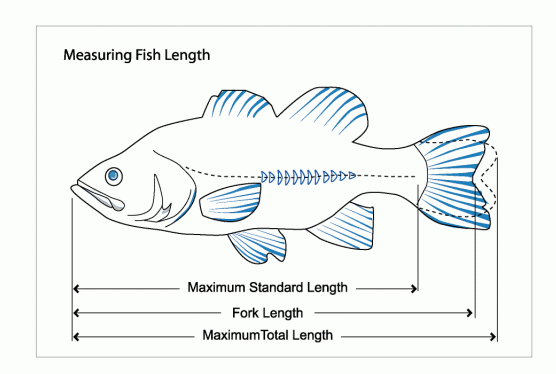Measures of Fish Length |
Fisheries biologists use three different measures of length:
1. Total Length,
2.
Fork Length, and 3.
Standard Length. 
FishXing uses total length for calculations and in reporting swimming speeds found in the literature; therefore, fish lengths entered into FishXing should be total lengths.
If only fork length or standard length is available for the analysis species, then FishXing uses a conversion factor to estimate total length. FishXing has morphometric data in the Literature Defined Swim Speed Table with conversion factors for all species found under FishXing’s Literature Defined Swim Speed tab. The conversions are in the form of total length/standard length or total length/fork length and were taken from morphometric information found in Carlander (1969, 1977) or www.fishbase.com.
See an example of how the conversion factors are used to calculate total length.
Total length is defined as the measurement taken from the anterior-most part of the fish to the end of the caudal fin rays when compressed dorso-ventrally (Anderson and Gutreuter 1983).
Fork length is defined as the measurement taken from the anterior-most part of the fish to the end of the median caudal fin rays (Anderson and Gutreuter 1983).
Standard length is defined as the measurement taken from the tip of the lower jaw to the posterior end of the hypural bone (Anderson and Gutreuter 1983).
Lengths Used in FishXing: Fish Length is used in two ways within the FishXing software.
1. To determine swim speed in equations using length as a variable.
2. To determine if the fish can swim into the culvert outlet or if a leap is required.